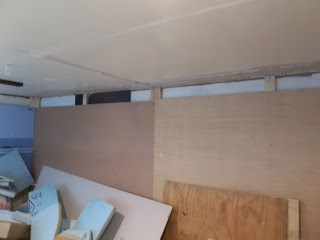 |
| WWSL 1st Subdivision |
Location. Schafer Prairie is the first station on the First Subdivision.
Design. Schafer Prairie is the station name for the helix connecting the two decks of the WWSL.
The helix is a single track main line, with a 21 inch radius, on a 2.38 degree grade, 6 1/2 levels. The helix is visible from one side only, and that side will have scenery and fascia.
Operations. Trains leave Brady Junction and head north on Division 1 trackage toward OPLC Camp 1.
Vignettes.
There are six levels to the helix. For an operator focusing on prototype operation, there is nothing worse than watching a train go round and round on a helix - it challenges the mindset. I decided to establish operational windows that I hope will enhance the operators operational experience rather than distract the operator from the un-prototype length of time the train is out of their immediate vision. Those operational windows I am calling 'vignettes'. These vignettes to will consist of the following right of way scenes:
- A road crossing.
- An absolute stop (ABS) dwarf signal for entry into Brady Junction.
- A storage track(s) for the WWSL's work train.
- A cut with embankment to the back of the helix.
- A storage track for ballast cars..
Track Diagram.
Roadway. This is the only location on the layout where the roadbed isn't foam. 1/4 inch cork roadbed will be used for the roadbed.
- WWSL main line - Class B with relaxed standards
- WWSL passing track - Class C with relaxed standards
Scenery. Scenery is limited in both the horizontal (30 inches) and vertical (3 inches).
- Mid scenery would be primarily cuts and fills with bushes. This scenery would be considered view blocks preventing operators from seeing the non-sceniced interior of the helix. Those view blocks would be removable from the inside for track access as required.
- Near scenery would be primarily detailed right of way, track and track fixtures, and ballast.
(pic)
Catenary/Signaling.
(C) There is no catenary located within the helix. Catenary poles may be part of the sceniced vignette as warranted.
(S). There will be an absolute drawf signal on the lower level to control access to Brady Junction.
Rolling Stock. I have envisioned having MOW cars built for operation and display. Those display cars (say 1930's WWSL) would be displayed on those otherwise inaccessible siding tracks. These cars would include single and double sheathed wood outfit cars, truss rod flat cars, wood ballast cars, etc.
Structures. None

















































